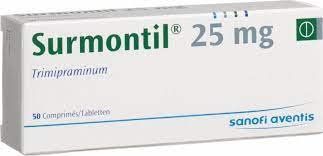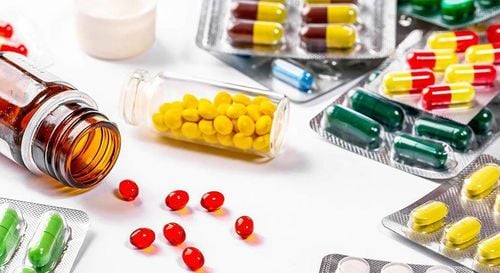This is an automatically translated article.
Hazidol 1.5 is a drug belonging to the group of psychotropic drugs, containing the main ingredient Haloperidol. So what does the drug do? How to use and dosage? Please read the article below.
1. What is Hashidol 1.5?
Hazidol 1.5 mg is effective in the treatment of Gilles de la Tourette syndrome or chemotherapy-induced vomiting and X-ray treatment for cancer. Hazidol 1.5mg is a product of Pymepharco.
Main ingredients: Haloperidol 1.5mg. The drug is in the form of a film-coated tablet.
Pharmacodynamics:
Haloperidol is a neuroleptic of the Butyrophenone group. According to pharmacological studies, Haloperidol has the same effect on the central nervous system as clopromazine and other phenothiazine derivatives. It has dopamine receptor antagonism, which is generally greatly enhanced by Haloperidol. However, the sedative effect is less than that of clopromazine. In addition, Haloperidol has a very strong antiemetic effect. Among the central effects, there are also effects on the extrapyramidal system. Haloperidol has little effect on the sympathetic nervous system. At normal doses, there is no anti-adrenaline nor anticholinergic effect. Because the structure of haloperidol is almost the same as that of gamma - amino - butyric acid. Haloperidol has no antihistamine effect. But has a strong papaverin-like effect on smooth muscle. To date, there have been no reports of allergic reactions. Long-term treatment with the drug has not been found to cause obesity, while this is a prominent problem with treatment with Phenothiazines. The patient is not sedated. Thus increasing the possibility of performing psychotherapy. Pharmacokinetics:
Absorption: After oral administration, Haloperidol will be absorbed from 60-70% in the gastrointestinal tract. Peak serum concentrations are reached after approximately 4-6 hours. Metabolism: Haloperidol is metabolised primarily through the cytochrome P450 of the liver microsomes, mainly by oxidative reduction. Therefore, there is a drug interaction when Haloperidol is co-administered with drugs that induce or inhibit drug-oxidizing enzymes in the liver. Elimination: Haloperidol is excreted in feces about 20% and urine about 33%. Only 1% of the drug is excreted by the kidneys as unchanged drug. Metabolites have no pharmacological effects.
2. Uses of the drug Hashidol
Hazidol 1.5mg drug treats the following cases:
People with acute and chronic psychotic manifestations, including schizophrenia and manic episodes. There is aggressive behavior and agitation in patients with chronic brain syndrome and mental retardation. Treatment of Gilles de la Tourette syndrome. Treatment of chemotherapy-induced vomiting and X-rays for cancer.
3. Dosage - How to use the drug Hazidol 1.5
Initial dose: Use 1-2mg x 2-3 times/day, the maximum can be increased by 30-40mg/day. Maintenance dose: Use 1-2mg x 3-4 times/day. For children, the elderly, weakened: Use 0.5 - 1.5mg initially.
4. Contraindications to using Hazidol 1.5
People who are sensitive to the ingredients of the drug. Coma and CNS depression due to alcohol, depressants, history of convulsions, Parkinson's syndrome. Older people have previously had Parkinson's-like symptoms.
5. Side effects of the drug Hazidol 1.5
Common: Agitation, depression, anxiety, confusion, dizziness. In some cases, psychiatric symptoms and convulsions, hyperprolactinemia, gynecomastia, menstrual cycle disturbances have been reported. Rare: Arrhythmia, tachycardia, orthostatic hypotension.
6. Drug interactions
Alcohol and CNS depressants, anticoagulants. Drug interactions that occur will decrease the effectiveness of the drug and increase the risk of side effects. Therefore, before taking Hazidol 1.5, you should consult your doctor if you are taking this medicine at the same time as other drugs.
Above is all information about the drug Hazidol 1.5, patients need to carefully read the instructions for use, consult a doctor / pharmacist before using. Absolutely do not arbitrarily buy Hazidol 1.5 for home treatment because there may be unwanted side effects.













